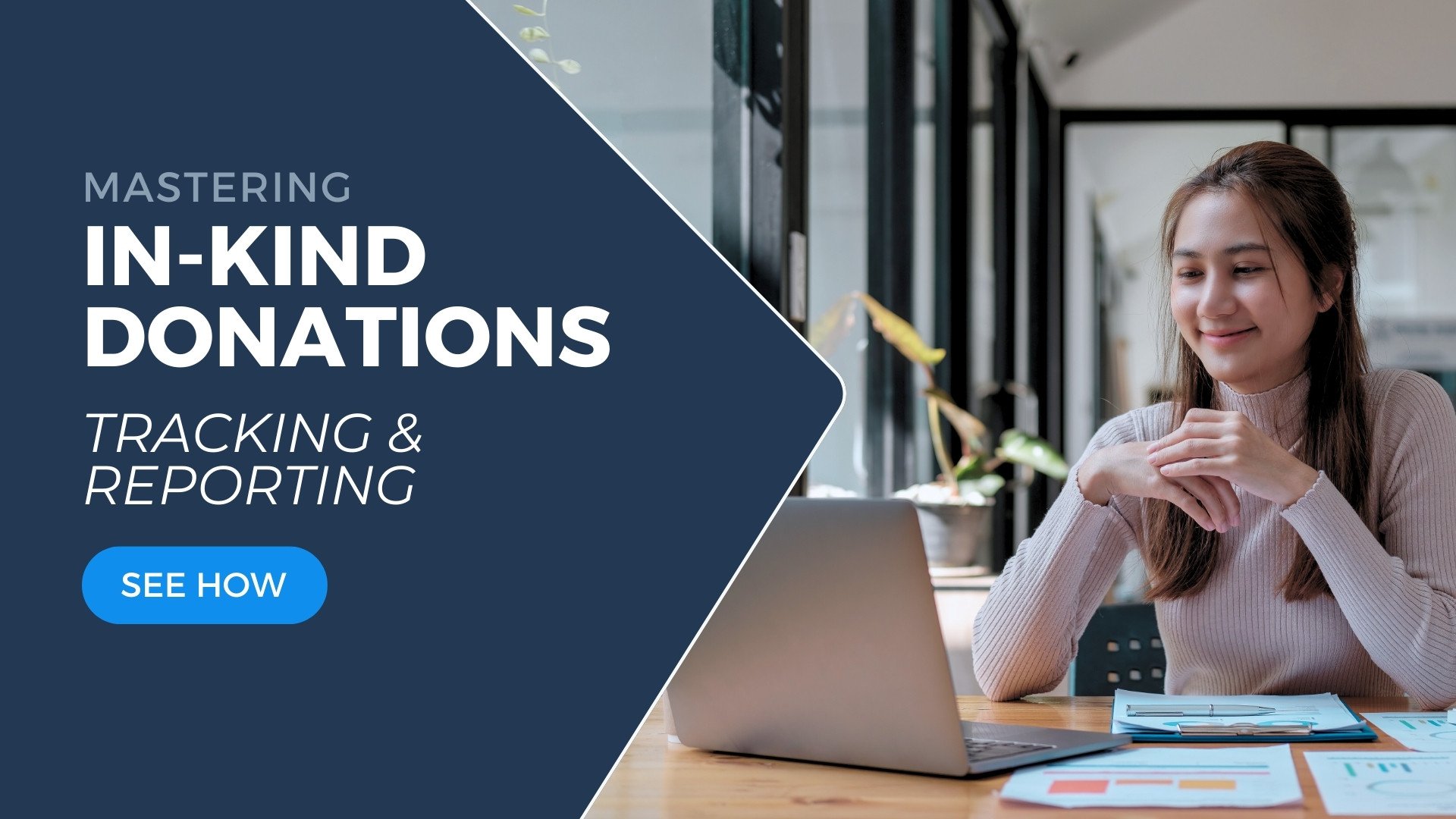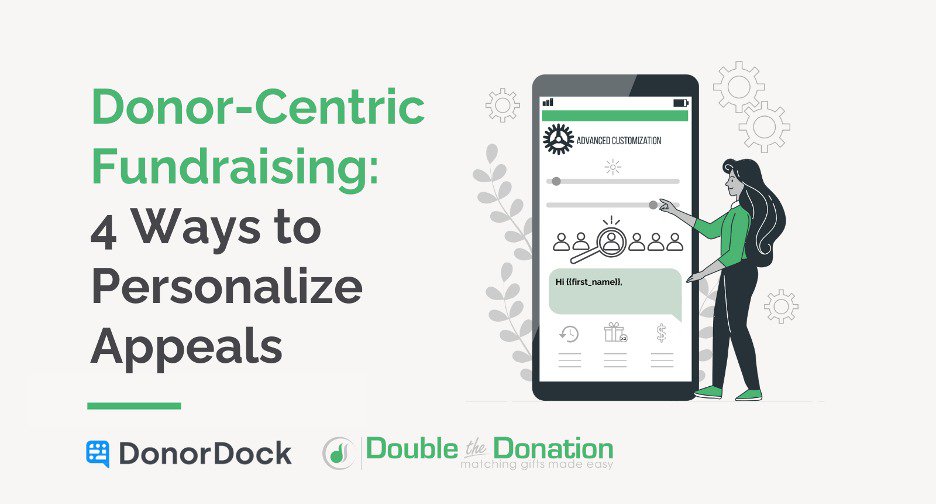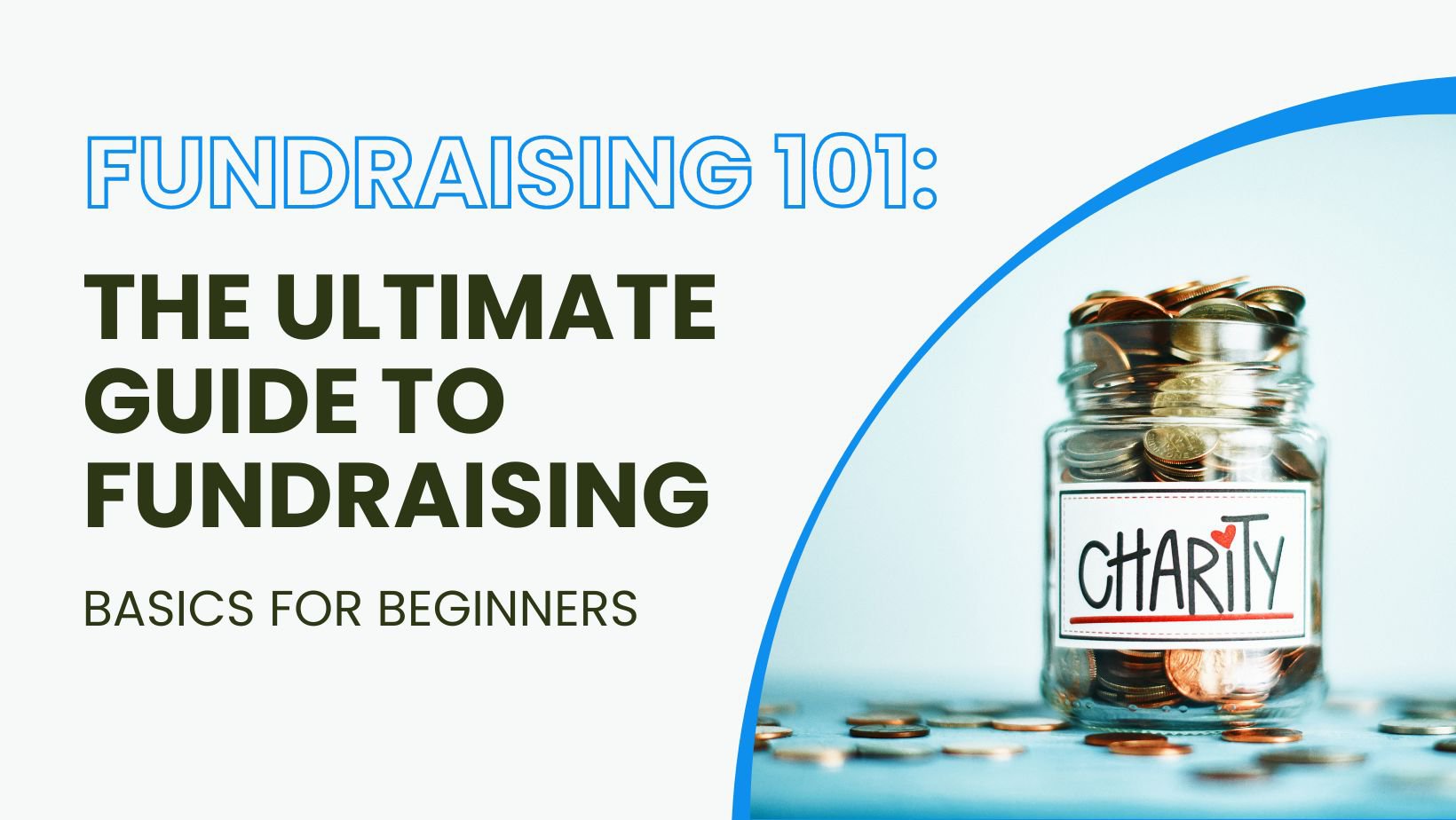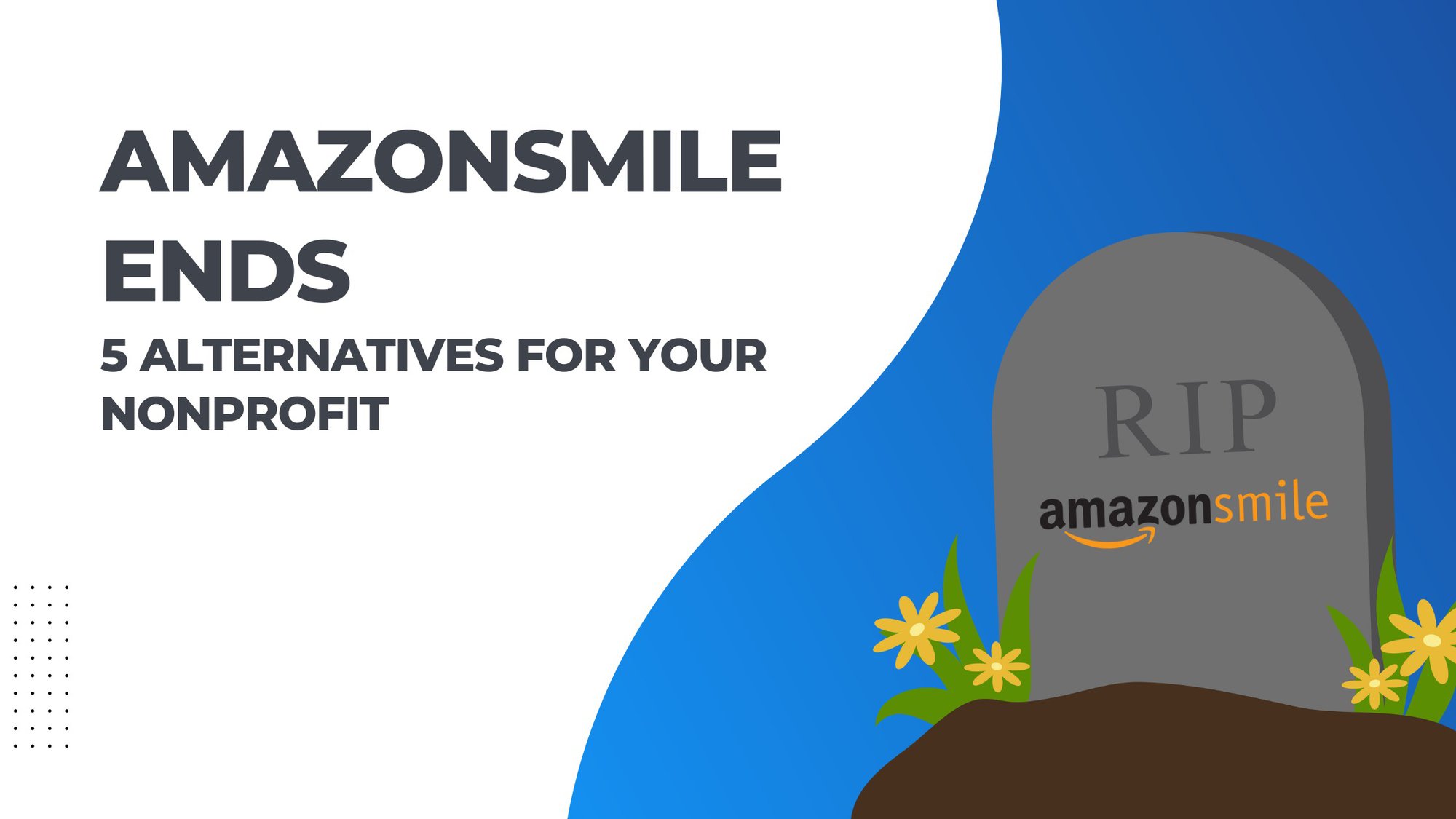In this episode of Beyond the Donation, host Matt Bitzegaio has a conversation with Kat Lacefield, founder of Just Because Consulting, about the challenges of fundraising for nonhuman nonprofits. Kat shares her journey of diving into the nonprofit sector at a young age, volunteering and working for different organizations, and eventually specializing in fundraising. She discusses her growth in the field and the importance of donor management. Kat also discusses the concept of nonhuman philanthropy, which includes organizations focused on animals and the environment. She shares the distinct challenges they face and emphasizes the importance of story sharing for effective donor retention.
Ep 24 | Fundraising, Donor Management, and Nonhuman Nonprofits show notes
[00:35] Introduction and Guest Background
[00:44] Journey into Nonprofit Sector and Fundraising
[03:15] Concept of Nonhuman Philanthropy
[04:05] “At the end of the day, there's nothing that's really nonhuman because if we're supporting animals, we're also supporting humans. And for the environment, that's a very direct connection to be made with humans of if there's no environment to support us then there's no human societies and communities.”
[04:46] “There is no such thing as nonhuman or human philanthropy. We’re part of an ecosystem. Each part plays its role.”
[05:06] Challenges in Storytelling for Nonhuman Causes
[07:11] “How do we talk about the importance of protecting a river? Try to get people to realize when they themselves have appreciated a river - childhood memories, a lot of nostalgia stories, how we feel when we go out and spend time out in nature.”
[11:11] Unique Challenges Animal and Environmental Nonprofits Face
[15:50] Importance of Donor Segmentation and Retention
[20:19] “People tend to not organize their databases very well. For shelters or animal organizations, it’s thinking about all the connections that your donors have to your organization - a donor can also be an adopter or a foster family, a board member, or a volunteer. You really need to make sure that your list has as much information on this person as possible.”
[31:05] Advice for Nonprofit Leaders: Invest in your Fundraising and Development Strategy
[32:48] Conclusion and Contact Information
Edited transcript
Kat Lacefield introduction
Kat Lacefield: I've been working in the nonprofit sector since high school. That led me to work with many different nonprofits in a volunteer capacity – be it in homeless shelters or elderly folks homes. I got to work at the Montreal SPCA and work in an animal shelter, which had been my dream. And that started my more official professional journey into the nonprofit sector.
Accidental fundraiser
After many years, I fell into fundraising as tends to be the case. And, I've always had a big passion for it. It came very easy to me. I loved doing it. I was very comfortable asking for donations, and I found it fun, which is very rare. And so, I realized that that was a skill set that could be very useful for a lot of nonprofits – particular for the animal rights movement.
And so that led me to start my own practice of consulting, which just because it's the best thing that people need is some fundraising support to really build up their capacity. So that's how I started as my, um, that's how I started my business. And, uh, I find myself here today getting more and more involved in what I've been calling non human philanthropy.
Nonhuman Philanthropy
Matt Bitzegaio: So when you say nonhuman philanthropy, why don't you help our listeners understand what you mean by that?
Kat Lacefield: A lot of people tend to think, “Oh, do you mean animals do philanthropy?” And, of course, that's not the case. When you think about philanthropy, you think about charities that are mostly towards humans.
However, there's a growing portion of organizations that are going towards nonhuman entities, be it animals or the environment. It's not a human entity. It's external to humans. The more I started thinking about the fact that at the end of the day, there's nothing that's really nonhuman. If we're supporting animals, we're also supporting humans. Pets have caretakers. So you're also supporting them.
And for the environment, there's a very direct connection to be made with humans. If there's no environment to support us, then there are no human societies and communities. So, I started talking about nonhuman philanthropy. It is a very different and unique component of the philanthropic space that has its own challenges and limitations.
But we need to move towards this holistic and more conscious vision of philanthropy. There is no such thing as nonhuman or human philanthropy. We're part of an ecosystem. Each part plays its role.
What I'm pushing for is a more ecosystemic vision of philanthropy.
Telling the story of a nonhuman nonprofit
Matt Bitzegaio: When you're working with a cause that isn't directly related to the human component, how do things change when you're trying to tell that story of that charity? What are the differences that you would see between those types of different organizations?
Kat Lacefield: There are a couple things that often need to be said: one, it really depends on the nonprofit. So when we're talking about a shelter versus an animal rights group versus an environmental protection or conservation organization, the storytelling will be very different.
It also depends on who your audience is. An example of a shelter: most of your audience is going to be people who have pets. So it's putting the story in so that people can put themselves in the perspective of imagining if that happened to my pet. “I can imagine my animal going through that same kind of situation.”
So it's the same case as with humans. People are moved by individual stories. If you start talking about large issues like poverty and say, “It's so complex and so large scale” then an individual feels like their donation or their impact will be a drop in the ocean and will not change anything. But when you bring an individual story, same as you would for a child in need or a family, the same storytelling can kind of be told, but about one individual animal. So, instead of talking about the thousands of dogs in shelters across the country, I'll talk about one.
For example, Pugsley, which is the name of my dog, was abandoned because his family could no longer take care of him. And you start telling the story of that individual dog. So in that case, it's very similar to human nonprofits.
Nostalgia vs anthropomorphizing to build connection
But when we move towards the environment, how do we talk about the importance of protecting a river? If you start calling the river Charlie, it doesn't have that same component. So, what you have to do is connect on the emotional level. This is what donations are often about. Connecting on an emotional level is trying to get people to realize that when they themselves have appreciated a river.
Think of childhood memories – a lot of nostalgic stories can come up about how we feel when we go out and spend time in nature. That calming sensation of hearing the river flow by. I remember as a child sneaking into my grandmother's backyard, and we would climb through the rocks on the little river that went upstream and that sense of cleansing – both energetically and just the fun of it.
Sometimes it's about nostalgia. So it's using the human component and the human experience to share why we want to protect these environmental and external spaces. Those are the different types of stories that can be shared.
However, there's also the other side of humanizing it or individualizing it too much. We have to be careful not to anthropomorphize too much. With animal stories, we have to be aware of not giving them too much human emotion so that it becomes forced or that it feels fake.
What I often recommend is that we explain the situation without thinking too much of trying to make the humans put themselves into the animal's position. That’s something we need to be wary of and be careful of doing.
Connecting with stories that are difficult to connect with
And there's also the other challenge of the megafauna. Humans, we will of course feel more of a connection to any animal that is similar to us. So if we can talk about mammals, we'll be more much more connected. When you think about fish, it's harder to connect with them and to put ourselves in that position. If you go down even further to insects or to less cute animal, it's challenging.
So that's when we'll talk more about their importance from a systemic level. That animal is part of an entire system that will help everything. And then you understand the connection.
So it's challenging to say what kind of storytelling, because it really will depend on what the causes, but I hope that helped explain the different challenges and opportunities available.
Unique challenges for animal and environmental nonprofits
[Matt Bitzegaio] What are some of the other unique challenges that you see when working with, and I even hesitate to say, nonhuman focused organizations? And, when you refer to these organizations how would you refer to them?
[Kat Lacefield] I still use the term nonhuman just to explain the difference. Or I'll say animal and environment-focused organization. But I find nonhuman makes sense. But of course I use it more as a buzzword. It gets people thinking.
The situation is a bit different between Canada and the U. S. So, I will mention certain things that are very Canadian-focused. When we think about the definition of philanthropy itself, philanthropy literally means “love of man.”But when we think about protecting animals in the environment, man is often considered as a separate part of it. Often, when we think about nature, we don't include ourselves in it, which I think is a fallacy. Of course, we're part of nature.
But when we're talking about the general public and what we perceive as philanthropy, we don't consider the wider container in which humans work. So if we look at the definition itself of philanthropy, that can be a big challenge in fundraising.
And when we look at the historical causes that were funded by philanthropy, in Canada there are three categories of what is considered charitable. Religion, education, poverty relief. And then there's everything else. However, those three main ones are very human-focused.
When we're talking about animals or the environment, is it even considered philanthropic? And in Canada, because of that definition, getting charitable status for those organizations has always been very challenging. You almost have to prove the benefit for humans, not just for the animals themselves.
However, there's another one where when you're defending animals and the environment, a lot of time, the law is not on your side. There are not as many laws to protect animals and the environment. Of course, we're in the crux of it right now, where many movements are happening and evolving that legislative framework. Because of that, a lot of these organizations end up being very advocacy-oriented. And it is very difficult to prove impact.
It can take 10 years or 15 years to change legislation. And so when you're defending these two big causes, a lot of that education and awareness is hard to measure, which makes it a bit challenging when you're doing fundraising to ask for funds for those more abstract concepts. It's not the same approach for fundraising for advocacy versus more direct causes.
Donor retention
[Matt Bitzegaio] That makes a lot of sense. Um, and I suppose in some ways, you know, that could probably be said for human-focused organizations that are, are doing advocacy versus, you know, being as far as like the challenges of sometimes showing the direct impact and so forth. But, um, so let's, let's shift and segue to talking just in general about.
What are some of the things that just from your deep background in fundraising you think are key steps that nonprofits need to be taking when it comes to donor retention?
[Kat Lacefield] I'm going to answer by starting with a story of the Montreal SPCA. They had a two hundred fifty thousand dollar project, and it was going to allow for the shelter to offer many more free sterilizations, especially for stray cats. But the project had a pretty hefty bill. And, so they did a mailing campaign. And it pretty much failed. They didn't have a lot of success except for one donor. They got one donation of $250, 000. When the person was interviewed, she wasn't even from the city. She was from the other end of the country.
And she said, “Well, I've been giving for many, many years to this organization. I've been giving about $500 a year.” For this organization that was considered a major donor. So every year she said she received a handwritten Christmas card for her donation saying thank you. In her opinion an organization that will take the time to write a handwritten letter and say thank you. That’s an organization that pays attention to details, relationships, and what's important. And that's an organization that she will trust to take care of the sterilization clinic. So, if that doesn't tell you the importance and prove the importance of building relationships with your donors, even if they are only what we consider a smaller gift. The impact in the long term that can have on the capacity of your donors to give can have tremendous results.
[Matt Bitzegaio] It's interesting. You hear those stories more often than people realize. You've had a donor who's maybe given a small amount, and you don't even realize their capacity. Then, something happens and that becomes very clear.
I'm a big believer in thanking your donors well. That will always help your organization. That's a really good example of that.
Donor segmentation and donor engagement
[Matt Bitzegaio] So, one of the things that I always think about with our customer base is this idea of trying to really understand your donors well. And then do a good job of segmenting those donors out. So when it is time to communicate and engage with donors, you are doing the best you can to engage with them across the channels that they want to hear from you on and, and about the topics that they're interested in.
What does donor segmentation mean when we talk about that topic for nonprofits?
[Kat Lacefield] People tend to not organize their databases very well. When I've done trainings and I give webinars on donor segmentation, specifically for shelters, it's thinking about all the connections that your donors may have. A donor can also be in an adopter, in a foster family and a board member or a volunteer. You need to make sure that your list has as much information on this person as possible.
I'll show you another personal story that explains the importance of segmentation and collecting information. Once again, at the Montreal SPCA, I was a volunteer, a foster family, and I worked there for five years. I received a donation call from a company that they had given their list to.
“Hi, Catherine.” Super robotic. And they go on to explain a very cheesy story without saying thank you. They don't know who I am at all. And that was so insulting. Of course, I did not give. How many times are people receiving calls and not giving because they feel unseen or unheard? So there's that one component of segmenting to understand and make sure that you're respecting your different donors. If they're a monthly giver, you should say, “Thank you for your monthly gift. Thank you for your regular giving. It allows us to have stability.”
You have to recognize the different journeys that these people have been on. Another really important point about segmentation is understanding the capacity of an organization to do stewardship. The handwritten card thing. You cannot send a handwritten card to all of your donors if you have thousands of donors on your list. So you have to learn how to focus and prioritize your list.
Three categories for segmentation
I focus on three major categories for just that prioritization usually, and it's based on the amount of the donation. But not just the last gift. You can also consider the average. Having the average can help you understand their overall capacity to give, which over time can be quite significant. Instead of looking at just the last one, there's also the lifetime value.
Someone who has been giving $60 every month for 10 years or, or more. That's a very significant amount at the end of the day.
The second is of course the frequency of donations. Someone who has given once in their whole lifetime is not the same as someone who has given four, five, six, or seven times. Maybe a one-time giver will have a one-point prioritization versus someone who has given over five times. So that's another segment that needs to be considered.
And then there's the last one that I usually include in my analysis of databases, which is recency. How warm is your contact? Did they give you a big donation five years ago? Are they even still living in that same city? Do you still have their updated contact information? Have they changed? We don't know. So when it's been a longer time, before asking, you need to do some form of warm-up. Send some emails. And those who interact will get created into a second segment, which will be active, like new engaged, older donors, and then you can start bringing them towards the ask.
So these three factors of amount, frequency, and recency are very important when segmenting your database to understand how you're going to approach these different people.
When to engage one-to-one vs one-to-many
[Matt Bitzegaio] Obviously, it would be great if we could do meaningful one-to-one engagement with every donor every single time. We know that's not always possible. And so, what good segmentation does is help you identify, who do we want to engage one-to-one with versus who are the candidates where we want to engage, but it's going to have to be on a one-to-many type of situation. It’s about building better relationships and a connection to your donors.
[Kat Lacefield] Exactly! It's about getting to know them. When I was doing donor development, we had maybe 2000 monthly donors and maybe a list of 3-4 thousand one-time donors. I was alone in my department, but I was able to call almost everyone at least once throughout my year. I would send them just a quick call and ask them, “is your information up to date? What motivated you to give. Thank you so much.” And of course, when their credit card expired, I would talk to them one-on-one. Having someone on the other line really allows you to build a connection.
And I would include notes so that if I ended up calling them six months later, I'm like, “Hey, how's Fido the dog? How's your cat? How's her cancer? Did she end up making it through?” Making that effort to make a personal connection with your donors goes a long way.
Leveraging donor feedback and social media
And, I just wanted to bring up one more point about the one-to-many versus the difficulty in establishing direct relationships with everybody. But allowing donors to share their stories with you so that it's more of them taking action. And that can be automated.
So when you donate, for example, if there's a prompt, like hit reply and share your story, to collect stories, either in the form of a video or sending pictures or a chat. You can then showcase their stories publicly, if they consent, of course. Even someone who gives 20, if they share a video of them saying, “I donated to your organization because I spent my entire childhood in the wilderness, and I find it sad that my children might not have access to that in 5, 10 years because of urbanization.” That can be a powerful message that you can then use to share.
You can say “thank you so much for sharing this video.” So, it creates a relationship right off the bat when they make a donation.
They're almost stewarding themselves by sharing their own story. It makes the experience much more memorable and allows them to feel much more connected because they feel listened to. You're asking for their story as individuals.
Where to start with donor engagement
[Matt Bitzegaio] You mentioned this idea that you have a thousand donors you’re responsible for there's absolutely no way you can engage with all those people. We have a really cool thing in DonorDock called the Daily Five that takes five of your donors and pops them up on what we call the ActionBoard® encouraging you to engage with them. And we've seen it work for people where they just, they get through those five every day.
It's a simple text message or a quick email or just pick up the phone and make a phone call to them. When you break it down into that small manageable chunk, all of a sudden you've gotten a lot more done in six months than you realized you could. That's a really valuable lesson that you touched on there. Break it down and stay consistent. And you're going to be able to accomplish a lot when it comes to building those relationships.
[Kat Lacefield] It's like any behavior that we try to change in life. You build it up and that's how you will achieve big results. And it is consistency – carving out the time in your schedule, even if it's just half an hour. Send an email to one of your top prospects or send them a DM.
One piece of advice to go Beyond the Donation
[Matt Bitzegaio] You have an impressive resume of things that you've done. If you could just offer one piece of advice to executive directors or development directors that are out there working in these nonprofit organizations what you would want to share with them?
[Kat Lacefield] Invest in your fundraising or your development strategy. Most people are running from like one thing to the next. Take the time to have a plan.
If you want to build a house, you need to have a plan or else your house will not stand. And so we need to have that for fundraising and that investment will have a huge return. Kind of like identifying those five prospects per day. If you just have a list of a thousand, and you don't know where to start, you're not going to start. But if you have a plan –this is the five people I’m going to talk to today tomorrow, etc.–you'll be able to move forward. That's why I think investing in a donor database analysis and segmentation eases everyone's world.
Invest in a donor pipeline or prospecting list to know who to approach. Invest in a grant pipeline or invest in someone who's going to sit down with you and create a plan of which approaches should you do. Should you do mailing? Should you do peer-to-peer? Should you do email?
You can't do everything. So focus on your strengths. And usually having someone to help you, even if it's internally, that's dedicated to making that plan with you. It goes a long way in getting clarity and getting those donations in.
To see more from Beyond the Donation or our guest check out the links below
More about Kat Lacefield:
To Connect with Beyond the Donation Podcast:
BTD Podcast DonorDock LinkedIn Matt LinkedIn














